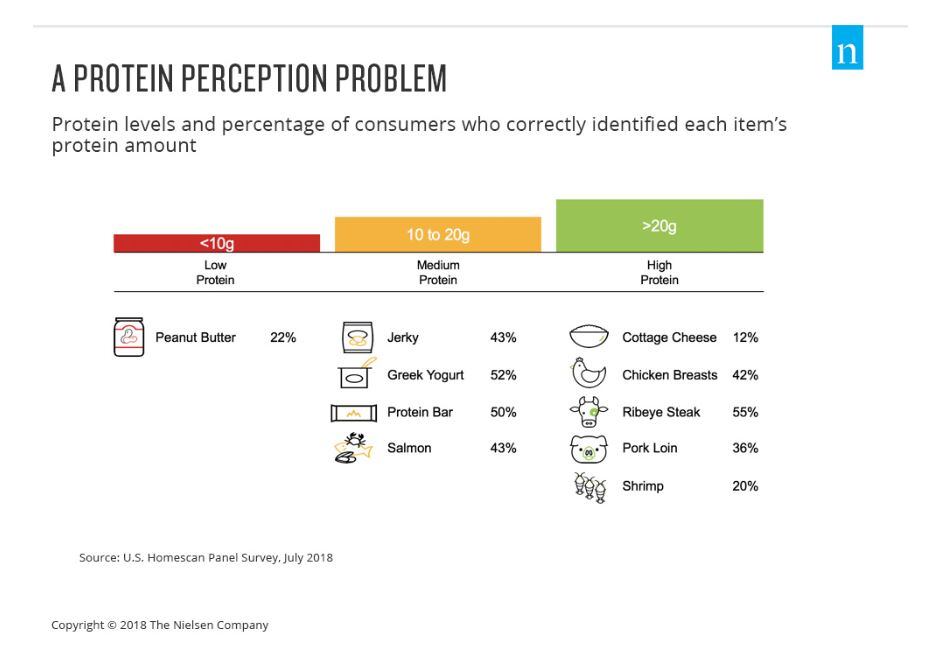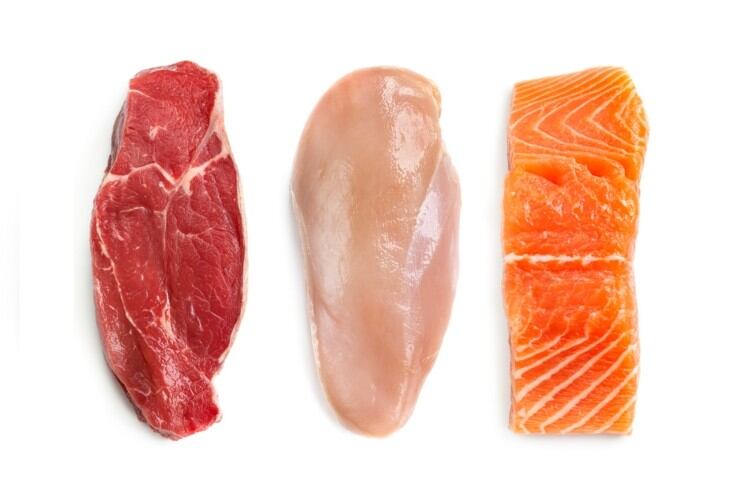Dollar sales of protein across the top five protein categories – meat, eggs, dairy, fish/seafood, and legumes/nuts/seeds – totaled $148.7bn in sales, growing 1.1% in 2017, according to Nielsen.
“While the popularity of plant-based proteins is certainly growing, data shows that consumers are still choosing traditional sources of protein such as meat, eggs and dairy as their primary source,” Nielsen said.
‘Protein knowledge among US consumers is fairly low’
Despite 55% of US households saying that high protein is an important attribute they consider when making food and beverage purchases, many when asked, don’t necessarily know which items have higher amounts of protein compared to others.
Nielsen conducted two surveys: one was fielded in December 2015 and the other in July 2018. Each survey included more than 20,000 respondents who were asked their perspective on how much protein certain items from across the store contain, on a range of high protein content (more than 20 grams per serving), mid-level protein (10-20 grams per serving) or low protein (less than 10 grams per serving).

For example, 78% of respondents said they believed peanut butter is higher in protein than it actually is. Additionally, only 20% of respondents knew that shrimp is a high-protein food, and a majority of consumers didn’t recognize cottage cheese as a high-protein food, when in actuality, its protein count is quite high, according to Nielsen.
“Overall, protein knowledge among US consumers is fairly low. Of the 10 products included in our surveys, only three items reached a majority of consumers correctly identifying protein content levels—even though more than half of consumers say high protein is an important attribute in their food purchases,” Nielsen added.
Meat falls in protein perception
Consumers also had trouble correctly identifying how much protein was in certain types of meat, the surveys revealed.
“Perhaps what is most interesting, is that the blockbuster protein sources—beef, chicken and pork—also didn’t score well in the minds of consumers, even though they’re all high-protein products,” Nielsen stated.
Between 45% and 64% of consumers did not consider beef, chicken, or pork to be particularly high in protein, according to the July 2018 survey – a wider spread than the 2015 survey.
Chicken, however, scored higher in terms of consumers recognizing its protein content increasing four percentage points to 42%.
Fewer consumers correctly identified beef and pork as being a high a source of protein between 2015 and 2018, according to the surveys.
Most knowledgeable protein consumers?
Nielsen found that consumers of the “Greatest Generation” (those that grew up during the years of the Great Depression) and millennials were the most knowledgeable about protein sources.
Millennials performed the best in both surveys correctly identifying the protein content for five of the 10 products (peanut butter, jerky, protein bar, chicken breast and salmon filet). Greatest Generation came in second with highest percent correct in four products (cottage cheese, ribeye steak, pork loin and shrimp).
“That said, however, consumers still make 60% of their purchase decisions at the shelf. So as consumers continue to hone their specific diets and shopping habits, manufacturers and retailers have a real opportunity to tout protein content right on-pack or with in-store signage, even for products where it seems obvious,” Nielsen noted.



